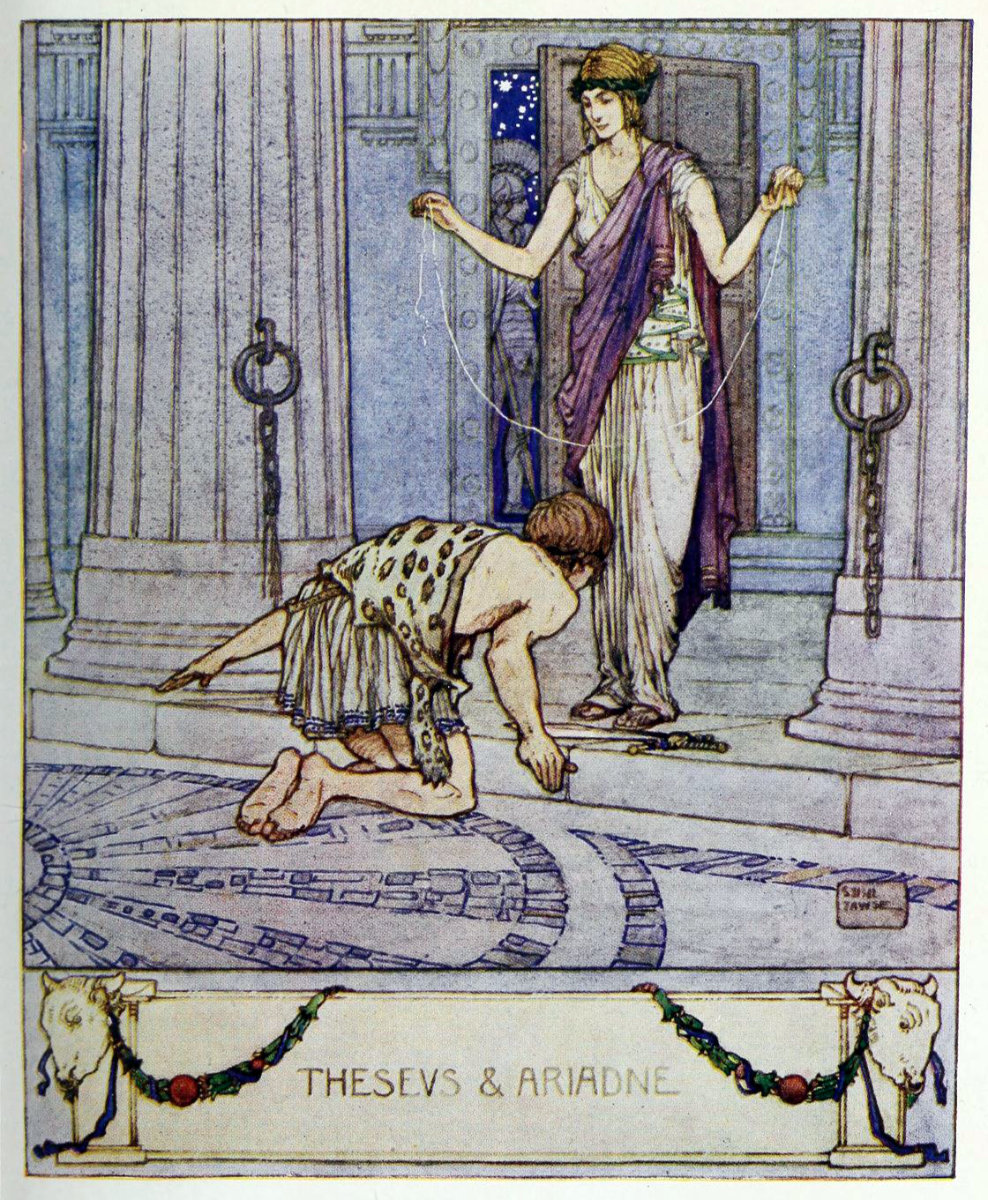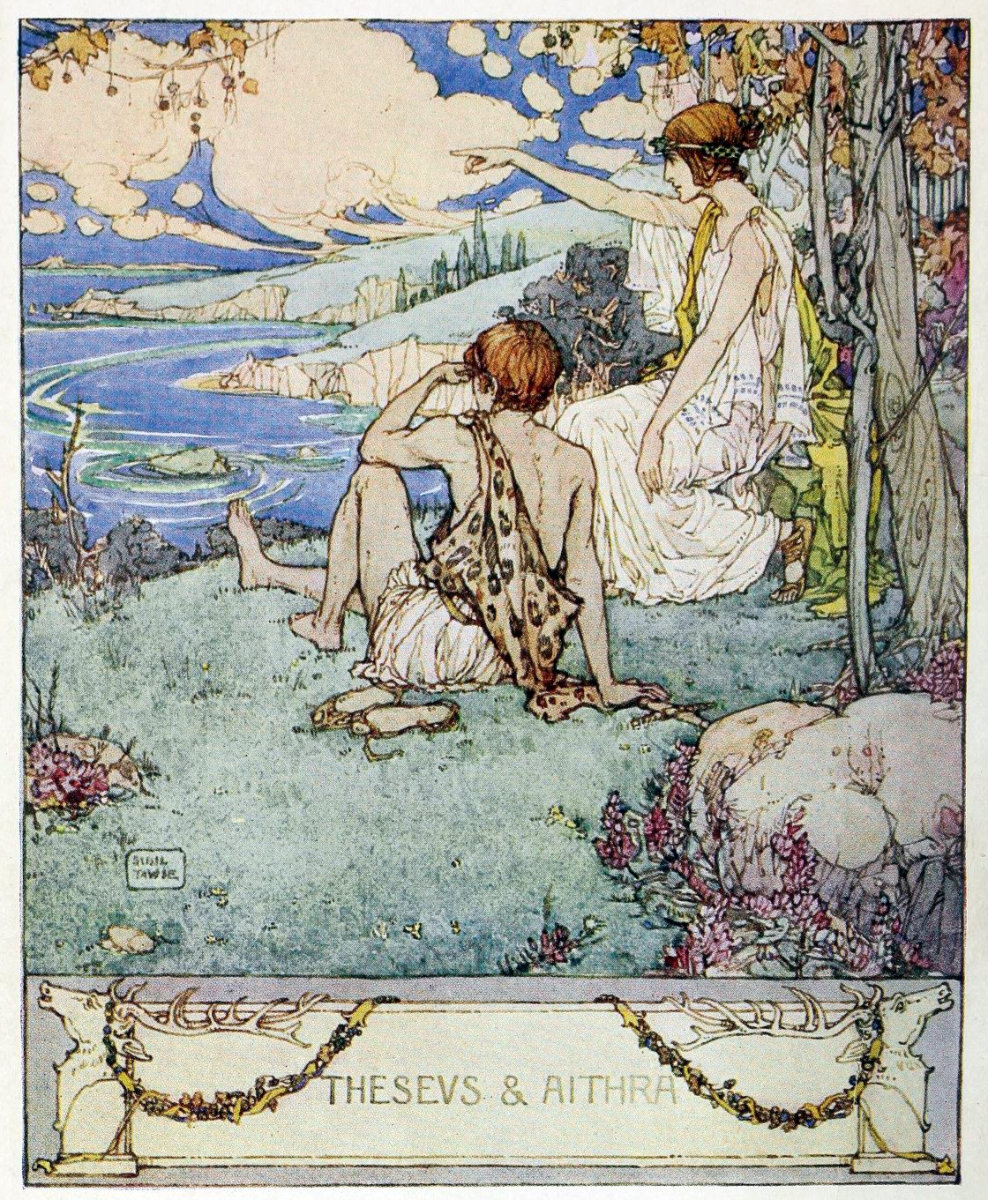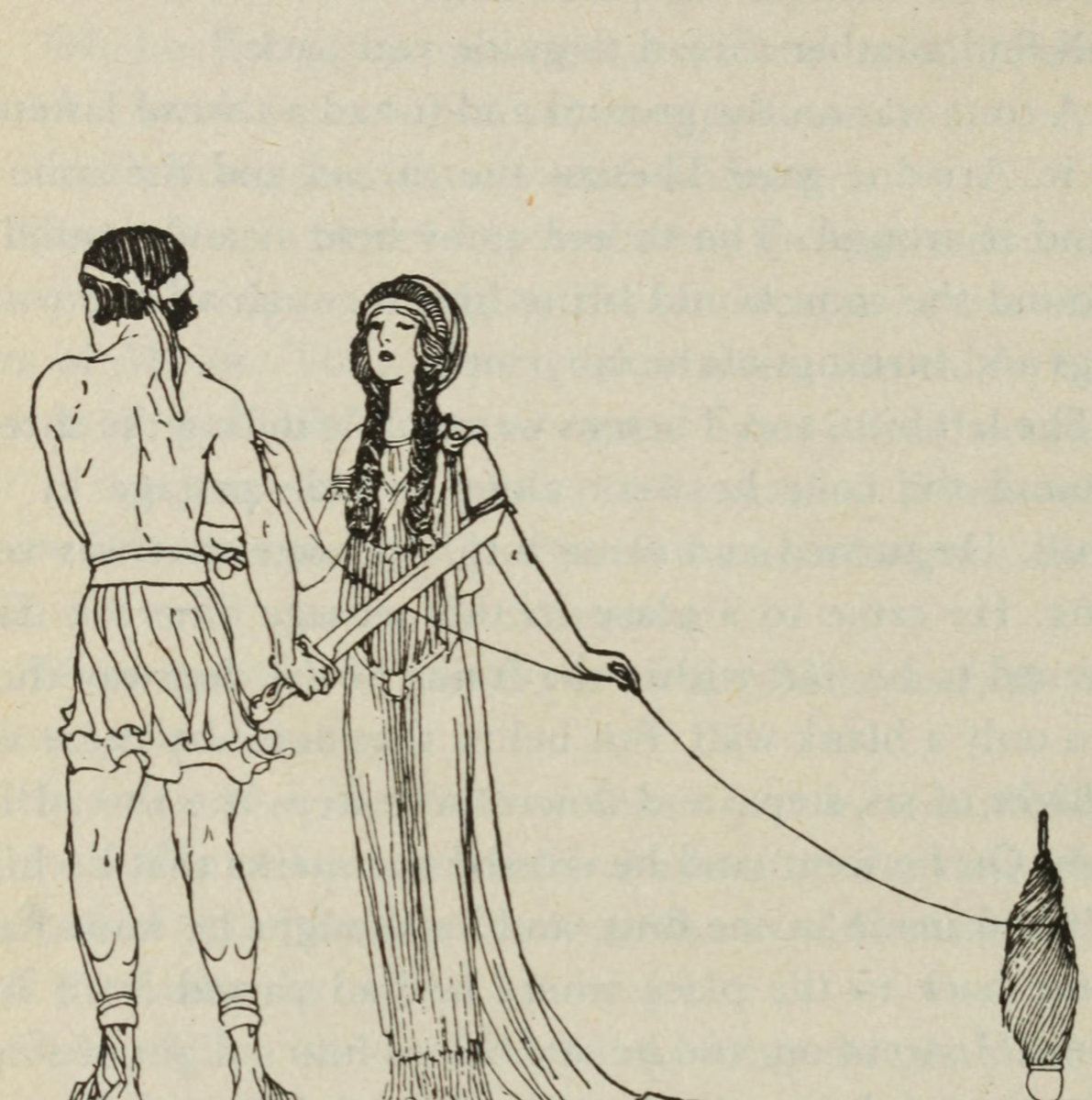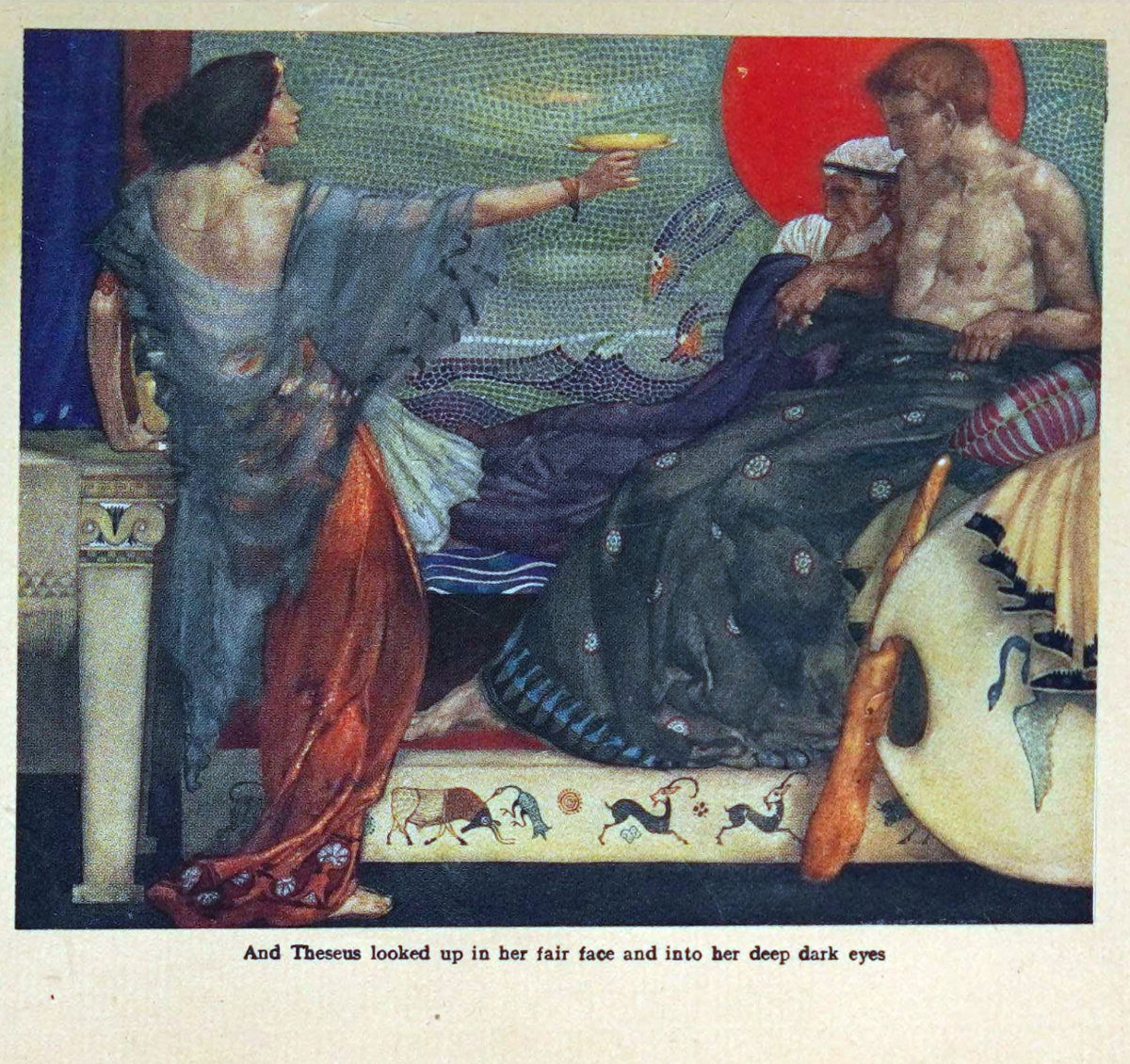Theseus was the mythical king and founder-hero of Athens. The myths surrounding Theseus, his journeys, exploits, and friends, have provided material for fiction throughout the ages. Theseus is sometimes described as the son of Aegeus, King of Athens, and sometimes as the son of the god Poseidon. He was raised by his mother, Aethra, and, upon discovering his connection to Aegeus, travels overland to Athens, having many adventures on the way. When he reaches Athens, he finds that Aegeus is married to Medea (formerly wife of Jason), who plots against him. The most famous legend about Theseus is his slaying of the Minotaur, half man and half bull. He then goes on to unite Attica under Athenian rule: the synoikismos (“dwelling together”). As the unifying king, he is credited with building a palace on the fortress of the Acropolis. Pausanias reports that after synoikismos, Theseus established a cult of Aphrodite (“Aphrodite of all the People”) on the southern slope of the Acropolis. Plutarch’s Life of Theseus makes use of varying accounts of the death of the Minotaur, Theseus’ escape, and his romantic involvement with and betrayal of Ariadne, daughter of King Minos. Plutarch’s avowed purpose is to construct a life that parallels the Life of Romulus, the founding myth of Rome. Plutarch’s sources, not all of whose texts have survived independently, include Pherecydes (mid-fifth century BCE), Demon (c. 400 BCE), Philochorus, and Cleidemus (both fourth century BCE). As the subject of myth, the existence of Theseus as a real person has not been proven, but scholars believe that he may have been alive during the Late Bronze Age, possibly as a king in the 8th or 9th century BCE.
| Alias Theseus |
| Real Names/Alt Names Theseus |
| Characteristics Hero, Adventurer, Myths & Legends, Bronze Age, Greek |
| Creators/Key Contributors Unknown |
| First Appearance Greek mythology |
| First Publisher ○ |
| Appearance List Literature: Plutarch’s Life of Theseus, based on Pherecydes (mid-fifth century BCE), Demon (c. 400 BCE), Philochorus, and Cleidemus (both fourth century BCE), Sophocles’ Oedipus at Colonus, Euripides’ Hippolytus, Seneca’s Phaedra, Geoffrey Chaucer’s “The Knight’s Tale”, Jakob Ayrer’s Theseus (1618), Racine’s Phèdre (1677), William Shakespeare’s A Midsummer Night’s Dream and The Two Noble Kinsmen, F. L. Lucas’s epic poem Ariadne (1932), André Gide’s Thésée (1946), Mary Renault’s The King Must Die (1958), Jorge Luis Borges’ “The House of Asterion”. Opera: Thésée (1675), Teseo (1713), Hippolyte et Aricie (1733). Film: Teseo contro il Minotauro (1960). Comics: Exciting Comics #2, Forbidden Worlds #69, Famous Funnies #7. |
| Sample Read Bulfinch’s Mythology by Thomas Bulfinch [Internet Archive] |
| Description Theseus was the mythical king and founder-hero of Athens. The myths surrounding Theseus, his journeys, exploits, and friends, have provided material for fiction throughout the ages. Theseus is sometimes described as the son of Aegeus, King of Athens, and sometimes as the son of the god Poseidon. He was raised by his mother, Aethra, and, upon discovering his connection to Aegeus, travels overland to Athens, having many adventures on the way. When he reaches Athens, he finds that Aegeus is married to Medea (formerly wife of Jason), who plots against him. The most famous legend about Theseus is his slaying of the Minotaur, half man and half bull. He then goes on to unite Attica under Athenian rule: the synoikismos (“dwelling together”). As the unifying king, he is credited with building a palace on the fortress of the Acropolis. Pausanias reports that after synoikismos, Theseus established a cult of Aphrodite (“Aphrodite of all the People”) on the southern slope of the Acropolis. Plutarch’s Life of Theseus makes use of varying accounts of the death of the Minotaur, Theseus’ escape, and his romantic involvement with and betrayal of Ariadne, daughter of King Minos. Plutarch’s avowed purpose is to construct a life that parallels the Life of Romulus, the founding myth of Rome. Plutarch’s sources, not all of whose texts have survived independently, include Pherecydes (mid-fifth century BCE), Demon (c. 400 BCE), Philochorus, and Cleidemus (both fourth century BCE). As the subject of myth, the existence of Theseus as a real person has not been proven, but scholars believe that he may have been alive during the Late Bronze Age, possibly as a king in the 8th or 9th century BCE. |
| Source Theseus – Wikipedia |







